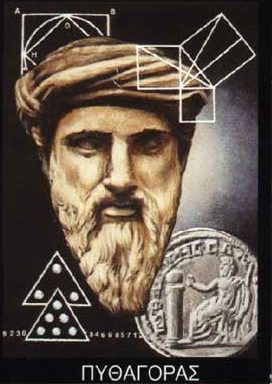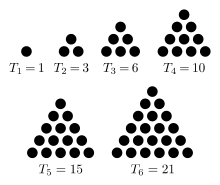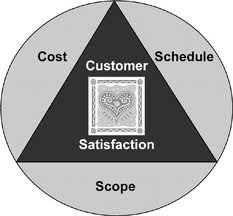What’s in a Name
Omne trium perfectum
The number three (3) is omnipresent in cultures around the world; in literature, philosophy, and religion; from the 3 bears, through the 3 branches of government to the 3 divisions of comparative religion; mankind throughout the ages has used the number 3 as a symbol of discovery and progression.
Here at 3GA Marine Ltd., as an engineering and technical services company, we are particularly interested in how 3 is viewed in the domain of science and technology.
The foundation of science is mathematics. Mathematics is a mysterious thing; it works predictably, every time.
Those who developed geometry, algebra, and other staples of mathematics, were aware that its source was hidden in mystery. They were impressed by the beauty of the structural order they were discovering, and regarded mathematics as sacred knowledge.
 Pythagoras (c. 580-500 B.C.), who developed a large, long-lasting school around mathematics, is reputed to have said:
Pythagoras (c. 580-500 B.C.), who developed a large, long-lasting school around mathematics, is reputed to have said:
“Number is the within of all things.”
At his academy, Plato required the study of mathematics as a prerequisite to philosopheme, a study that was synonymous with “the love of wisdom” and later adorned with the motto “ad vitam animae ad Veritas” (to life the soul to Truth). They studied the recurring, harmonious patterns inherent in mathematics, music, and nature, and they recognized that such patterns occurred throughout the universe. The sacred nature of mathematics to the ancients can scarcely be overstated. Plato said:
“Geometry is knowledge of the eternally existent.”
Most importantly, numbers were understood to express in code, those eternal constants that define the universe. Each number held a place in the cosmic story of transformation and the universal creating process, as such:
The number one represented unity, the original state of the universe, and the first stage in the process of becoming. It was called the Monad, from the Greek word “Monas,” which meant “Oneness.” One or unity was symbolized by the circle, the circumference of which mystically has neither a starting point nor a point of termination; it simply goes on forever all by itself.

There is yet another special quality to the number one; the fact that any number, when multiplied by one, remains itself, as does any number divided by one.
The number two was called the “Dyad” from the Greek Duas, or a pair. The principle of the dyad is polarity. Our mind divides the world into dualities—heaven and earth, day and night, light and dark, right and left, man and woman, you and I. The downside of dividing the world into polarities; however, is that it separates us from nature, wholeness, others, and being. Polar tension is at the root of all birth and creation, but it also creates one of our largest dilemmas: what is beyond polarities?
To the Greek philosophers then, one and two were not considered to actually be numbers. Rather, they considered them to be the parents of all other numbers. They surmised that creation is involved when a pair of distinct but equal opposites unites to produce a third, new thing. Modern scientists know this as the law of attraction, and repulsion as from the basic polarity, light, energy, and all matter results.
The number three is the “triad”. Three was considered by the ancients to be the first born of the parent numbers, one and two. It supersedes the eternal solitude of one and the polarity of two and represents an entirely new synthesis. It is a breakthrough into the many, into the multivalent world in which we thrive and evolve; out of the abstract realms of unity and duality is created complexity.
In more recent times the number 3 was again affirmed as the first number, it being the smallest integer where n2 is greater than 2n and is shown to be the ancestor of all numbers simply because every number is the sum of, at most, 3 triangular numbers.
The three-sided triangle emerges from the triad. The triangle has the opposite property to that of the circle. Whereas the circle includes the largest area for the minimum perimeter (remember pi (∏)) it is indeterminate; the triangle on the other hand encloses the smallest area for the greatest perimeter and it has definitive direction.
As the circle has no end or beginning, the triangle has direction and stability.
In more modern times, Carl Jung said:
“Every tension of opposites culminates in a release, out of which comes a ‘third.’ In the third, the tension is resolved and the lost unity is restored.”
Three represents the result of creativity. It is natural; therefore, to divide reality into threes: beginning, middle, and end; birth, life, and death; past, present, and future. In these themes of three, opposites are balanced by a third mediating element that reconciles a conflict or enables the journey.
 Even we engineers turn to 3 for the foundation of creativity. As a structure, the triangle and its three-dimensional brother, the pyramid, are the structurally strongest shapes. The discovery and incorporation of the arch into ancient architecture resulted from a realization of this strength. Unlike any other shape, the three sides of a triangle resolve opposite tensions into one solid, stable whole needing no outside support. A triangle in this way is self-sufficient. In an arch, the top point of the triangle is the keystone that diverts weight downward through its opposite sides into the earth. Leonardo da Vinci said: “An arch is two weaknesses which together make a strength.”
Even we engineers turn to 3 for the foundation of creativity. As a structure, the triangle and its three-dimensional brother, the pyramid, are the structurally strongest shapes. The discovery and incorporation of the arch into ancient architecture resulted from a realization of this strength. Unlike any other shape, the three sides of a triangle resolve opposite tensions into one solid, stable whole needing no outside support. A triangle in this way is self-sufficient. In an arch, the top point of the triangle is the keystone that diverts weight downward through its opposite sides into the earth. Leonardo da Vinci said: “An arch is two weaknesses which together make a strength.”
Triangles are primary features of bridges, tunnels, dams and monumental structures like the Eiffel Tower. They bestow strength, balance, and efficiency of shape, energy, and materials. We incorporate triangles into our creations for reasons of superior structure, strength, efficiency, balance, visual appeal, and symbolism, thus;
Omne Trium Perfectum – Everything in threes is perfect.
We do things as engineers by organizing our actions into a project. The nature of the entity that is a project is defined as a finite set of actions that have a beginning, a middle, and an end (set-up, execute, and close: natural creation).
As project managers we look to 3 attributes of a project to describe its form, i.e. the project can be characterized in terms of scope, schedule, and budget. The harmonious balance of these attributes lead to the client’s satisfaction. Again we see that the optimization of 3 attributes provides for the most stable, strong and timely solution.
3GA is a triumph of 3 Great Attributes;
Experienced engineers align the Product, Price, and Process with the client’s project needs for Quality, Budget, and Schedule to provide services that are Reliable, Affordable, and Responsive.


